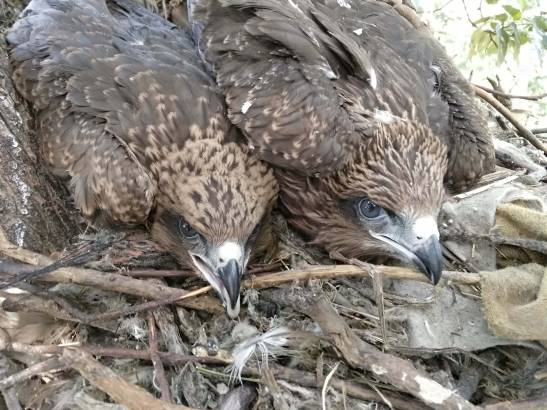A study with the participation of the Doñana Biological Station (EBD), the National Museum of Natural Sciences (MNCN) and the Royal Botanical Garden (RJB), centers of the Superior Council for Scientific Research (CSIC), published in the journal Total Environmental Scienceshows that the presence of opportunistic pathogenic fungi in lesions located in the oral cavity of black kites, milvus migransincreases the more degraded the habitat in which they develop in the nests.
The work, carried out in South East Madrid Regional Parkwhere kites nest near the Manzanares and Jarama rivers, and in the Donana National Parkhas interesting applications in conservation, as the level of disease and the species of fungi detected in birds can be used as indicators of the degree of deterioration of a habitat.
Scavenger birds such as the black kite are more exposed to toxic substances of anthropogenic origin.
“At scavenger birds as the black pipa are more exposed to toxic substances of anthropogenic origin. In addition, this species is a good model to study the impact of human activities on animals, as it not only appears in more preserved habitats, but also in more altered areas. The exposure of offspring to pollutants associated with these areas can change the composition of their microbiota and have negative consequences on the health of individuals as adults”, he explains. Aida Pirarchresearcher at the Complutense University of Madrid (UCM).
Fabricio Sérgioresearcher at EBD, highlights: “In this research, we studied the presence of lesions in the oral cavity of 38 chicks from a highly degraded area in southeastern Madrid, where parrots nest in fragmented and polluted forests close to the Manzanares and Jarama rivers, and compared with that of 105 puppies from the Doñana National Park, in Huelva”.
“The results showed that 36.8% of the chicks from Madrid had lesions in the oral cavity, while none of the chicks from Doñana were present”, adds the researcher.
Higher incidence of opportunistic pathogenic fungi in Madrid
Together they studied the differences in the composition of the fungal community present in the oral cavity of 48 chicks, with and without lesions, from the Madrid area and the Doñana area.
The results showed that 36.8% of the chicks from Madrid had lesions in the oral cavity, while none of the chicks from Doñana were present.
According to Javier Dieguez-Uribeondo s Laura Martin-Torrijos, both researchers at the Royal Botanical Garden and co-authors of the study: “We observed that the incidence of opportunistic pathogenic fungi was higher in the Madrid area than in the Doñana area. In addition, we identified species of fungi that may provide protection against these pathogens in unharmed chicks from Madrid, as well as those from Doñana. The fact that both types of fungi are affecting birds was expected in deteriorated and contaminated environments”, they add.
“The conclusions drawn in the study indicate that the analysis of the mycobiota of parrots can serve to measure the status of the habitat of these birds, as well as the evolution of pathogenic fungal communities and the risk of oral disease in them”, they emphasize.
Reference:
Pitarch, A.. “Fungal signatures of oral diseases reflect environmental degradation in an avian facultative scavenger”. Total Environmental Science
